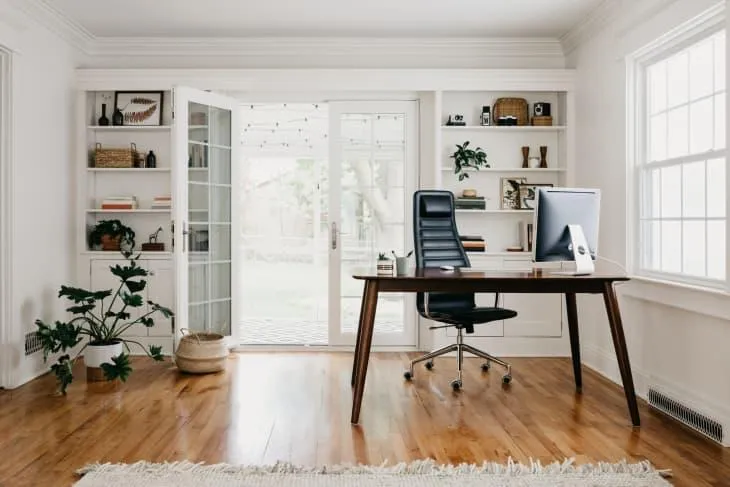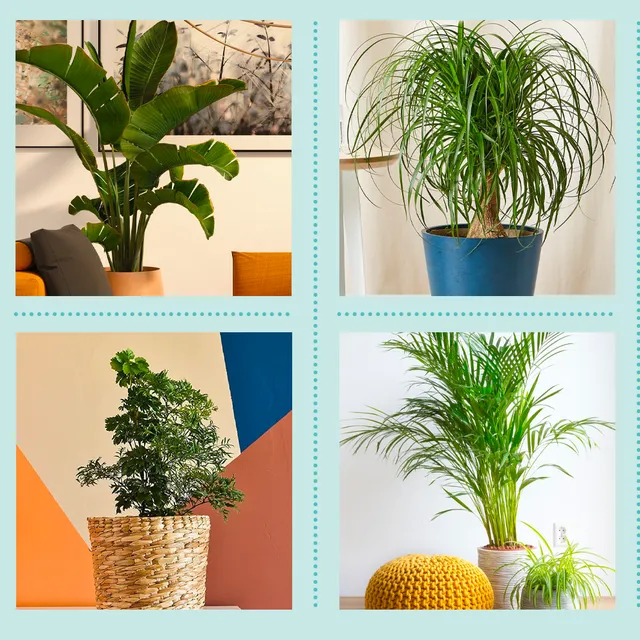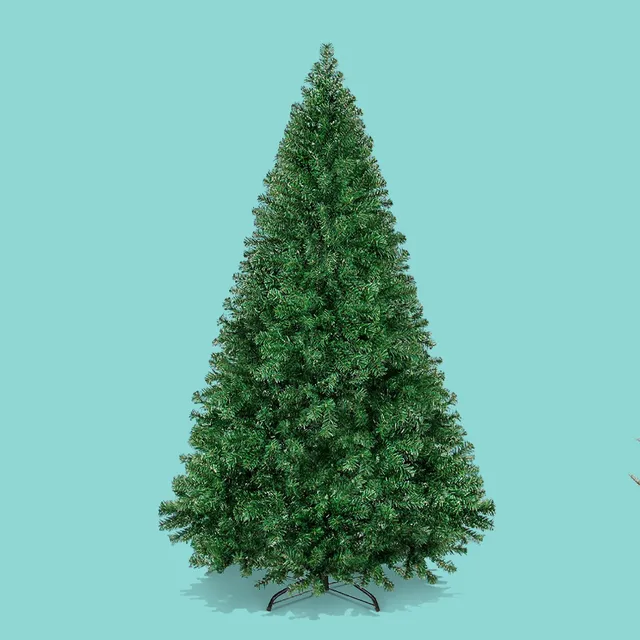The Best Indoor Small Trees to Beautify Your Home
If you’re looking to add a touch of natural beauty to your indoor space but don’t have much room, small indoor trees may be the perfect solution. As someone who has had my fair share of experience with growing different types of houseplants, here are some of the top indoor small tree varieties to consider, along with tips for caring for them.
Dwarf Umbrella Tree (Schefflera arboricola)
The dwarf umbrella tree is one of the most popular and easy-to-grow small indoor trees. As the name suggests, it has a compact, umbrella-like shape that doesn’t take up much space. Its foliage resembles little palm fronds branching out from the stem. This plant thrives in low to medium light and tolerates lower-light conditions better than some other varieties. It’s quite drought-tolerant once established and its leaves have an attractive cream and green variegated pattern. From my experience, the dwarf umbrella tree is very low maintenance and makes a lovely accent tree for any room.
Dwarf Rubber Plant (Ficus elastica ‘Decora’)
Another excellent small indoor tree option is the dwarf rubber plant. With its thick, waxy green leaves that resemble its larger rubber tree cousins, it adds a lush, tropic feeling to any space. These compact plants stay petite, reaching only 2-3 feet tall. While they prefer bright, indirect light, rubber plants can adjust to a variety of conditions. I’ve found them to be very hardy as well. Their beautiful, leathery foliage is intriguing to touch too. Rubber plants are quite drought-tolerant as long as their soil is kept evenly moist. Their small stature makes them ideal even for rooms with less sunlight.
Dwarf Date Palm (Phoenix roebelenii)
For those wanting a palm tree look in miniature form, the dwarf date palm is an excellent choice. With its slender arching trunk and circular emerald fronds, it brings to mind tropical island vibes. These slow-growing plants stay quite petite at 3-4 feet tall. They thrive in lots of sun but can adjust to lower light areas too. Dwarf date palms enjoy warm indoor temps and prefer consistently moist soil. From my experience, their palm fronds last for several months before requiring pruning. Overall, their stately appearance makes them a unique and eye-catching indoor tree.
Figs (Ficus carica)
Figs are not only delicious fruits but also make lovely houseplants. Dwarf and container varieties are perfect for indoor growing, staying compact at 2-3 feet tall. Their broad, lush green leaves have an attractive lobed appearance. Figs flourish in sunny windows and prefer moderate water and humidity levels. Here’s a situation I faced – one winter, I forgot to water my fig tree for over a week during a very dry spell indoors. To my surprise, it bounced right back with no apparent ill effects once watering resumed as normal, showing their resilience. Figs produce edible fruit in late summer too, if conditions are right. Their low fuss nature makes them a great option for small spaces.

Jade Plant (Crassula ovata)
If you’re looking for an almost indestructible indoor tree, go for a jade plant. Native to Africa, jades thrive in very neglectful conditions kind of like a succulent. They adapt brilliantly to low light and irregular watering. Having several jade plants myself, I can say basically they are crazy hard to kill! Jades come in various leaf variegations from solid green to creamy white edged. Being drought-tolerant is their specialty, though they still need occasional water. Their sculptural branching stems and thick fleshy leaves give jades an interesting bonsai-like appearance. Jades can live for decades with minimal care, so they make an excellent small indoor tree for those with busier schedules.
Dwarf Ficus (Ficus lyrata ‘Minima’)
The dwarf ficus or fiddle-leaf fig is similar to its larger cousins but stays much more petite in size. Reaching 2-3 feet tall max, it has graceful slender stems with attractive elongated oval-shaped leaves. These plants love bright light and warm temperatures. In my experience, they indicate when thirsty by drooping their leaves dramatically until watered. Allow their soil to dry slightly between waterings for the happiest dwarf ficus. With proper light and moisture, their leaves can grow up to 5 inches long. Indoors, their stately foliage forms a striking accent element that’s easy to care for in the right conditions.
Top Tips for Growing Indoor Small Trees
-
Light: Most varieties need medium to bright indirect sunlight for a few hours daily. Stand trees near an east or west window if possible.
-
Water: Water when top 1-2 inches of soil are dry. Check soil moisture frequently and water thoroughly until excess drains from holes in the container bottom. Allow soil to dry slightly between waterings for most varieties.
-
Humidity: Mist foliage with room temperature water daily if indoor humidity is below 40%. Pebble trays or humidifiers help too. Palms and figs especially need moderate humidity.

-
Fertilizer: Apply diluted liquid houseplant fertilizer every 2-4 weeks during active growth periods. Halve or eliminate fertilizer in winter when growth slows.
-
Pruning: Cut off any dead or damaged growth as needed to shape the plant. Some varieties like figs may require annual pruning in early spring.
-
Repotting: Upgrade pot size yearly in spring if roots start circling the drain holes. Choose containers just 1-2 inches wider than existing root ball.
To summarize the user’s main intentions in researching small indoor trees:
The user wants low-maintenance trees suited to small indoor spaces. They desire options thriving in lower light, as well as trees known for drought tolerance between waterings. Hardiness and resilience are important qualities. The user seeks trees providing lush foliage, sculptural form or tropical vibes. Aside from care requirements, they want to know which varieties offer interesting characteristics like fragrance, fruit or unusual leaf textures to stimulate the senses. Hopefully this detailed guide has answered all the user’s needs in choosing the best varieties and optimizing their indoor tree experience! Let me know if any other questions come up.

Best Indoor Small Tree Options
| Tree | Size | Light Needs | Care Level |
|---|---|---|---|
| Jade Plant | Up to 3 feet tall | Bright indirect light | Easy |
| Ponytail Palm | Up to 4 feet tall | Low to bright light | Easy |
| Bonsai Tree | Depends on species, stays small | Bright light | Moderate, requires pruning |
| Dwarf Umbrella Tree | Up to 5 feet tall | Bright light | Moderate, prune occasionally |
| Dracaena | Up to 6 feet tall | Low to bright light | Easy |
FAQ
-
What are some common indoor small tree options?
Basically, there are a few types of indoor small trees that frequently work well. Stuff like bonsai, jade, and money trees are kind of popular. Chinese evergreens and dwarf date palms sort of work too.
-
How much light do indoor small trees need?
Most indoor small trees need at minimum some light every day. However, full sun is usually not a good idea except for like a few hours in the morning or afternoon. Too much direct sun could possibly scorch the leaves. According to experts, it’s better to put small trees in spots with medium to low indirect natural light.
-
What kind of watering schedule works well for indoor small trees?
The watering schedule relies on the type of tree and environment. Nevertheless, it’s best not to keep the soil sopping wet or totally dry. You should check the moisture level by sticking your finger in the dirt. Maybe water when the top inch of soil feels dry. On the other hand, trees soaked in water frequently get root rot issues.
-
How do you care for an indoor small tree long-term?
Proper care is essential to keep an indoor small tree happy and healthy long-term. You’ll have to water and fertilize periodically. Pruning may also be needed to maintain shape. Pest problems could arise, so check for signs of bugs. Amazingly, with a little TLC, an indoor small tree can live for years!
-
Are some indoor small tree varieties harder to care for than others?
Definitely, certain varieties require more specific care compared to others. For example, tropical types like citrus and avocado need extra humidity. On the contrary, succulents and cacti are easier going with water. Additionally, flowering varieties may need pruning to encourage more blooms. Overall though, most indoor small trees just sort of need consistent light, water, and occasional fertilizer.

-
What are some fun ways to style indoor small trees?
You can really get creative displaying indoor small trees! For one, bonsai trees look stunning on shelves or stands as artwork. Monsteras or money trees dangling from hanging planters also seem awesome. But is it worth it if your cat keeps knocking them over? Pretty pottery adds charm too. Perhaps try an orchid tree in a colorful ceramic container. You can likewise group tabletop trees together for a stunning centerpiece. The options are endless – go wild with it!
-
Do indoor small trees increase indoor air quality?
Some studies appear to show indoor plants, including small trees, can help purify air. Strong leaves like peace lilies allegedly absorb toxins like formaldehyde. On the other hand, their effects are minor compared to an actual air filter. Regardless, keeping houseplants seems to lower stress and raise happiness. So even if the air quality boost is small, their presence could essentially lift your mood. What do you think – are the emotional benefits of indoor trees worth it in the long run?
